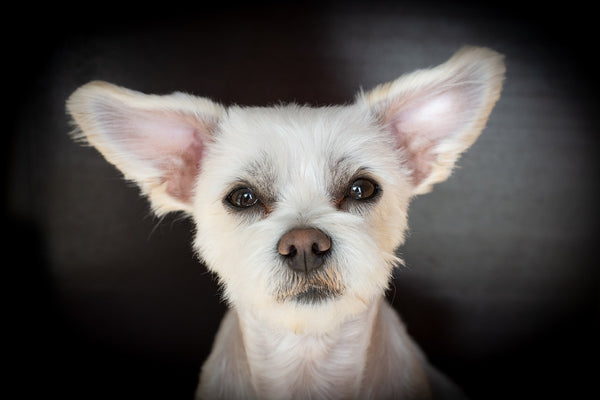How Much Do You Know About Dog Ears?
Dogs are renowned for their remarkable sense of hearing, surpassing our human capabilities. However, the wonders of their auditory system extend far beyond detecting sounds. From directional hearing to communication cues and breed variations, the canine ear is a fascinating organ that plays a vital role in a dog's sensory experience. Join us as we uncover the hidden secrets of these remarkable auditory organs.
1. Expanded Hearing Range
While humans have a limited hearing range, dogs possess an extraordinary ability to detect a broader range of frequencies. Depending on their breed, dogs can hear sounds at both lower and higher frequencies than humans. This expanded hearing range allows them to perceive subtle sounds that are otherwise inaudible to our ears.

2. Pinpointing Sound Origins
Dogs have an impressive talent for pinpointing the source of a sound with great accuracy. Their ears are designed to capture sounds from different directions, thanks to their ability to move and rotate independently. This remarkable feature enables dogs to precisely locate the origin of a sound, making them excellent at tracking and identifying potential threats or prey.
3. Ear Shape and Function
The diverse shapes and sizes of dog ears are not merely aesthetic variations; they serve specific functions. Dogs with erect ears, such as German Shepherds, can detect and amplify distant sounds effectively. On the other hand, breeds with floppy or pendulous ears, like Basset Hounds, utilize their ear shape to trap and direct sound waves toward their ear canals, enhancing their ability to hear low-frequency sounds.
4. Ear Communication
Dog ears play a significant role in their communication repertoire. Dogs use the positions and movements of their ears to convey various emotions and intentions. For instance, ears pricked forward indicate attentiveness or curiosity, while flattened or backward-facing ears may indicate fear or submission. Observing a dog's ear posture can provide valuable insights into their emotional state and help us understand their needs and feelings.

5. Protection and Sensitivity
In addition to their auditory functions, dog ears serve as a protective mechanism for their delicate inner structures. The external ear structures, including the pinnae and fur, act as a barrier, shielding the sensitive ear canals from foreign objects and potential injuries. Dogs also possess a highly developed startle response, enabling them to quickly move their ears in response to sudden or loud sounds, safeguarding their hearing from potential damage.
6. Unique Breed Characteristics
The diverse breeds of dogs exhibit a wide range of ear characteristics, adding to their individuality and charm. Some breeds are born with naturally erect ears, while others have floppy or semi-erect ears. Specific breeds may even have distinct patterns on their skin that correspond to the shape of their ears. These breed-specific variations make each dog unique and contribute to the rich tapestry of canine diversity.
The canine ear is an extraordinary organ that extends far beyond its role in hearing sounds. Dog ears provide an expanded hearing range, exceptional directional capabilities, and serve as a powerful means of communication. They also offer protection and sensitivity to sounds, ensuring the well-being and survival of dogs. Understanding and appreciating the intricacies of the canine auditory system deepens our connection with these remarkable animals. As we continue to unravel the mysteries of dog ears, we gain a greater appreciation for the vibrant sensory world experienced by our furry companions.